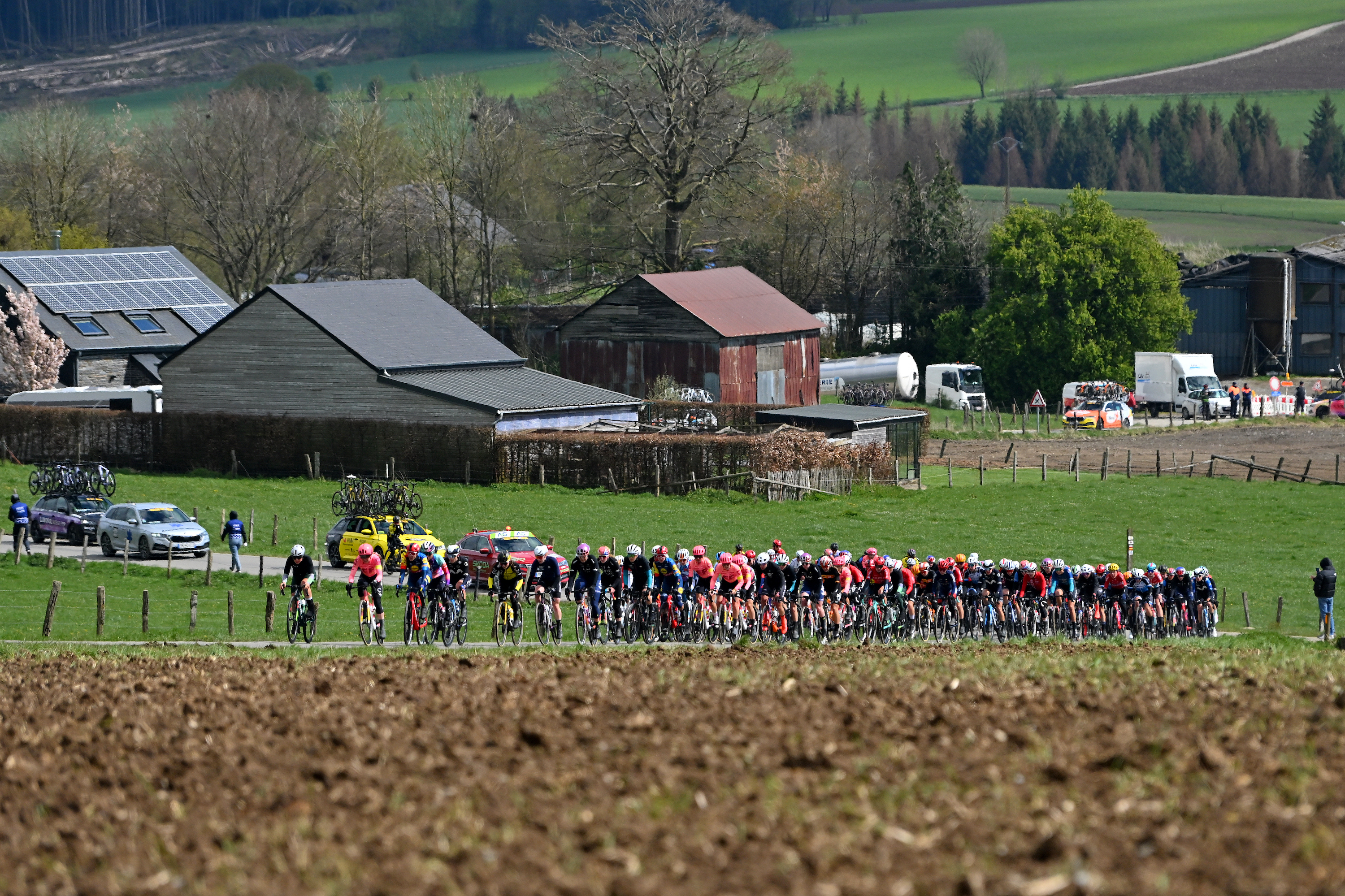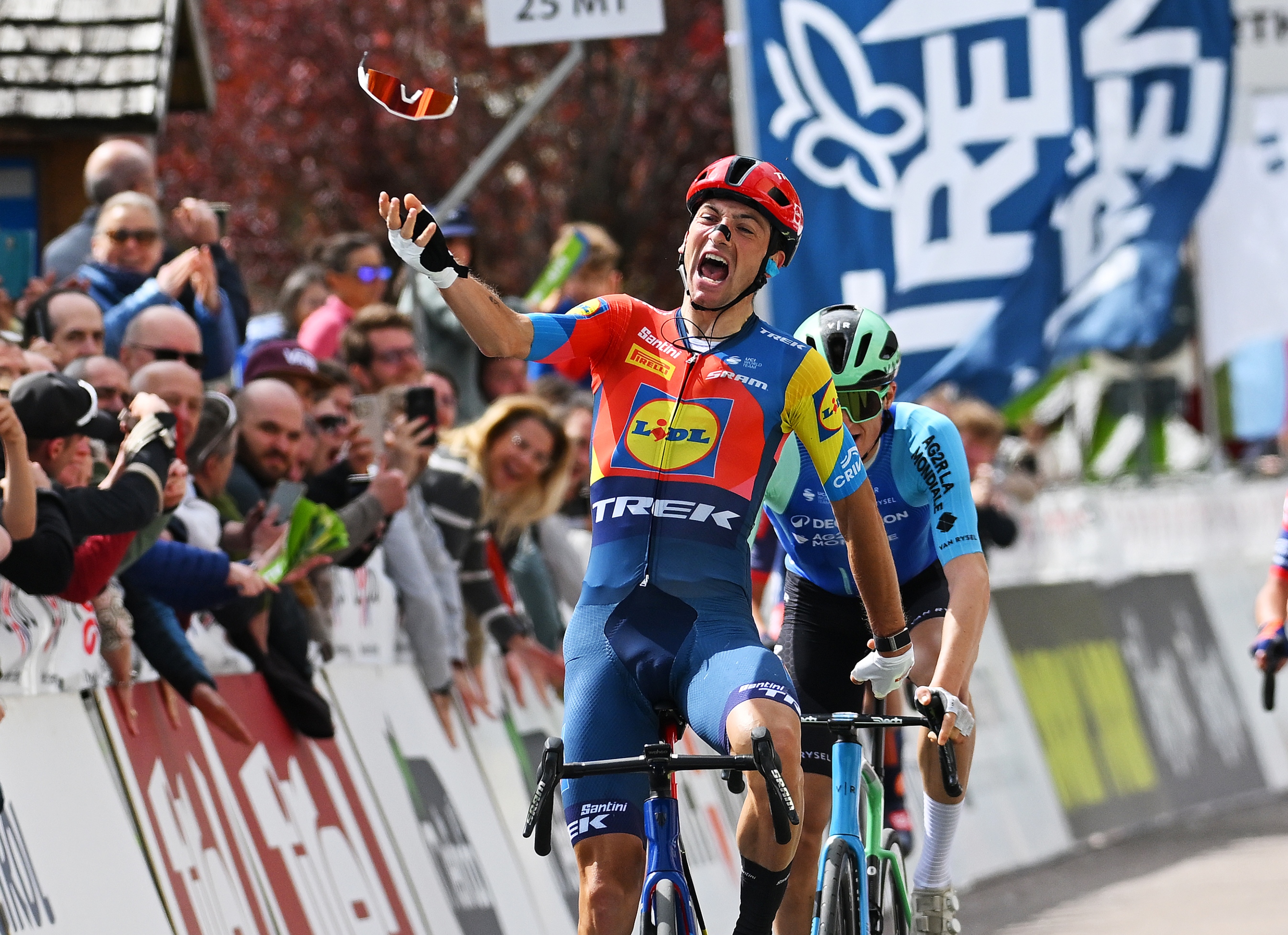I'm pregnant, and there's only one indoor cycling app I'll be using
Zwift's 'Baby on Board' sessions are more than just workout fodder, they're a lifeline for expectant mums


This article is part of a series called ‘A love letter to…’, where Cycling Weekly writers pour praise on their favourite aspects of cycling. The below content is unfiltered, authentic and has not been paid for.
It’s 5.20am, on Tuesday morning. I’ve wrangled myself out of bed for my normal sacred "me time" hour, spent either on the indoor trainer or lifting weights. Everything is normal, except, nothing is normal; I’ve not slept well (blame the hormones), and I’m nervous as I clamp down the Boa dials on my cycling shoes. I've just found out that I’m carrying a new life.
I know that exercise during pregnancy is recommended. Maintaining pre-pregnancy activity levels is advised by the UK's National Health Service (NHS), and, expectant mums not currently meeting 150 minutes a week are advised to build up to this threshold. There are a few conditions where extra caution would be suggested, but in an uncomplicated scenario, women are able and advised to continue their pre-pregnancy routines, reducing the intensity to a level that feels comfortable.
I know my body, and I know it’s carried a healthy baby to birth before, but it doesn’t stop the tendrils of anxiety scratching at the edges of my consciousness as I switch on my headphones and clip into my pedals. Still, as the familiar jingle plays, I load up Zwift’s ‘Baby on Board’ series, select ‘Mothership’, and begin to turn the pedals.
Whilst such happy news for our little family, and every experience is individual, the early stages of pregnancy do not always make for an easy ride; these can be anxious weeks for anyone, even more so if you've experienced a past loss. A new life is growing, but you’ve not yet seen evidence of the heartbeat which slashes miscarriage risk from over one in five to around 10%, then 3% if you're patient enough to await an NHS scan. Hormones go haywire, and can have a ricochet effect on anything from sleep to appetite to sense of smell. A strange taste of metal in the mouth is 'normal', as are spells of dizziness, and of course, the famous all-day nausea that's hilariously titled 'morning' sickness. And yet, it’s considered customary to keep the knowledge of this - so often joyful but sometimes bizarre-symptom-inducing - event a secret.
It's a time I want to feel reassured, calm, in control, and for me, that means sticking to normal routines. Which is why Zwift’s 'Baby on Board' sessions have been invaluable.
The suggested maximum heart rate during pregnancy changes every few years. Alarmingly, the seemingly prehistoric blanket '140bpm' guideline is still regularly touted. However, this advice is outdated, most experts agree on 85% of an athlete’s maximum heart rate. One of the reasons for capping heart rate is to avoid overheating, which does represent a risk, but can be mitigated with good airflow, a fan (indoors), and, for those of us in the UK, the great British weather (outdoors).
Get The Leadout Newsletter
The latest race content, interviews, features, reviews and expert buying guides, direct to your inbox!
The 'Baby on Board' series, devised by Olympic Gold medalists, and mums, Dani Rowe and Kristin Armstrong, provides 24 sessions, lasting 30-40 minutes (you can extend the warm up/cool down if you like), specifically designed to keep mums active, without overdoing the intensity.
Using the rider’s pre-pregnancy power data, Zwift calculates the ideal intervals for a body that’s growing a new human, with all the increased blood flow (up to 50% by week 40), and resulting decreased physical capacity, that brings. Encouraging messages flash up on the screen throughout, alongside helpful prompts for first-time mums who might not have come across simple hacks - such as flipping a stem as the bump progresses - before. The overriding message is consistent: exercise is good for you, it's good for your baby; and, you can always adjust your bias and lower the intensity if you feel you're pushing beyond a pace where conversation is possible.

There are 24 'Baby on Board' workouts to choose from
I'm not aware of any other indoor cycling app offering the same level of service. To an extent, this makes sense; female cyclists are the minority, and pregnant female cyclists will be a miniscule fraction of the already small proportion. However. The UK Office for National Statistics reports that, of women born in 1977, 84% had a child before the age of 46. And, while women do represent the smaller audience on the road, a glance at the demographics of any Spin class will dispute the suggestion that women don't like indoor cycling. Zwift calls itself women's "biggest fans", but it also registers a business case where it sees one.
What I've always found rather ingenious about the 'Baby on Board' sessions is that the efforts and recoveries seem perfectly timed to place enough stress on my body to elicit the endorphins, rush of energy, and all-round health benefits of exercise, without ushering me into a zone where I'm uncomfortable with the level of discomfort. My heart rate does nudge the ceiling I've set myself, but incredibly, it never exceeds it.
I stamp the pedals on the final 30 seconds, at 100% of FTP, in the last round of step-by-step increases offered by ‘Mothership’, relax into the cool-down, and let out the longest exhale I’ve allowed my body in 24 hours, as the sounds of a waking toddler begin to tickle the air. The challenges ahead stretch on, but so too does the hope of a new life and all the indescribable joy that brings, and, I feel supported. ‘Baby on Board’ isn’t just a workout series, it’s a lifeline.

Thank you for reading 20 articles this month* Join now for unlimited access
Enjoy your first month for just £1 / $1 / €1
*Read 5 free articles per month without a subscription

Join now for unlimited access
Try first month for just £1 / $1 / €1
Michelle Arthurs-Brennan the Editor of Cycling Weekly website. An NCTJ qualified traditional journalist by trade, Michelle began her career working for local newspapers. She's worked within the cycling industry since 2012, and joined the Cycling Weekly team in 2017, having previously been Editor at Total Women's Cycling. Prior to welcoming her first daughter in 2022, Michelle raced on the road, track, and in time trials, and still rides as much as she can - albeit a fair proportion indoors, for now.
Michelle is on maternity leave from April 2025 until spring 2026.
-
 I rode the full course of Liège-Bastogne-Liège and it opened my eyes to the beauty of this under-appreciated race
I rode the full course of Liège-Bastogne-Liège and it opened my eyes to the beauty of this under-appreciated raceFlanders and Roubaix have been and gone. Forget about them – some of the most epic racing of this Classics season is on the horizon
By James Shrubsall
-
 Sunglasses brand 100% pledges to pay Giulio Ciccone's fine for throwing his shades
Sunglasses brand 100% pledges to pay Giulio Ciccone's fine for throwing his shades100% says "this one's on us" after Italian charged 250 Swiss Francs at Tour of the Alps
By Tom Davidson